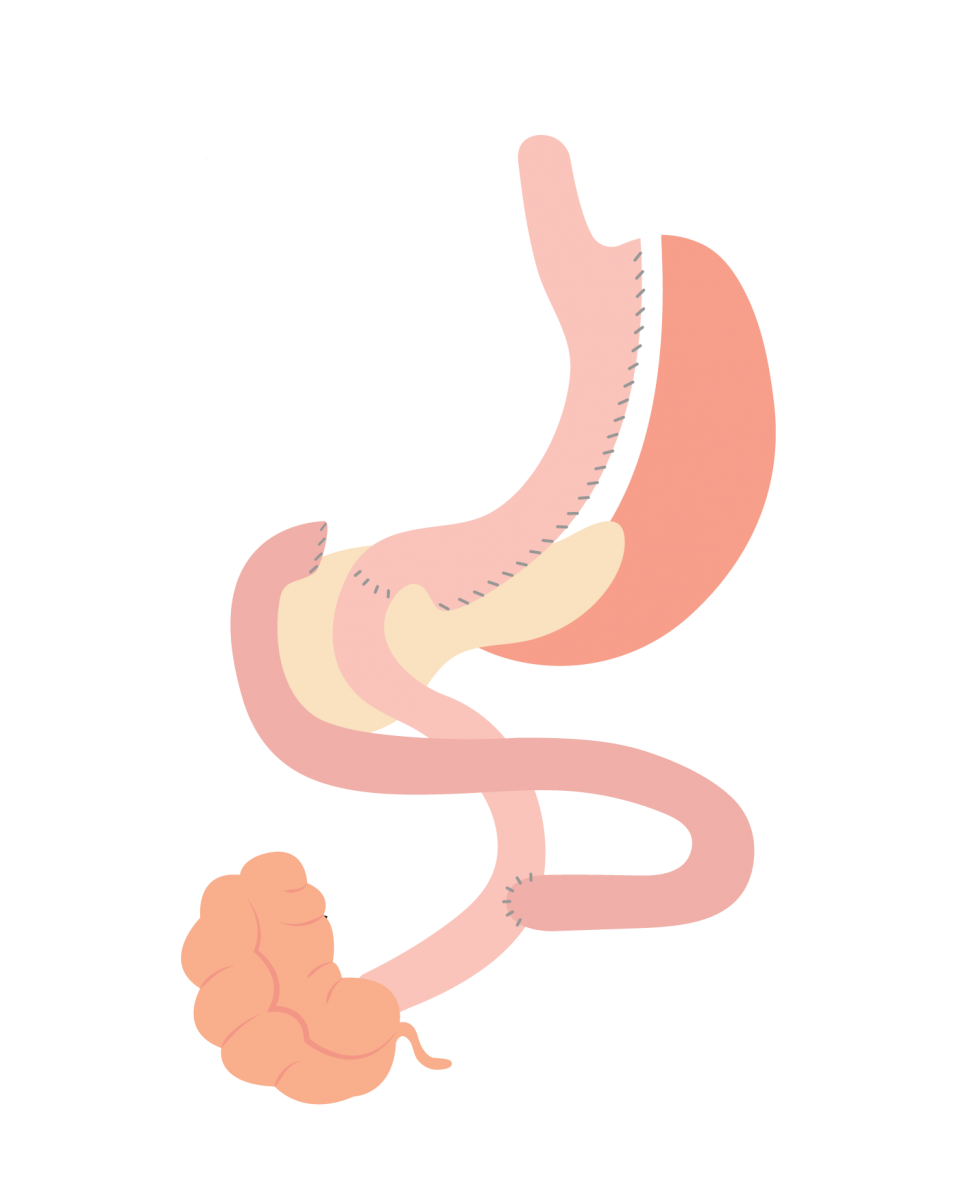

Duodenal Switch Weight Loss Surgery
This bariatric procedure also named bilio-pancreatic diversion with duodenal switch or gastric reduction with duodenal switch, is a complex procedure that combines the restrictive and malabsorptive aspects of bariatric surgery.
This procedure implies removing 70% of the stomach and most of the duodenum rerouting the food pathway to a distal portion of the small intestine. As a result, there is a substantial caloric malabsorption, the patients only absorb about 20% of what they ingest.


The issue with this treatment is that it does require a significant level of care, requiring to take vitamin and mineral supplementation above the normal requirements. Patients can become malnourished if they do not gain the right levels of nutrients in their diet.
- 70% EWL over 10 years
Duodenal Switch VS Gastric Sleeve
Before you make the decision to schedule a bariatric surgery consultation, we recommend making to it’s right for you. Whether you are just exploring the possibility of getting bariatric surgery or are already trying to understand the benefits each procedure offers, you’ve come to the right place. When researching bariatric surgery, it’s highly likely that you’ve come across endless articles discussing gastric sleeve or a gastric bypass. In fact, you probably are aware of the key differences between a gastric bypass and a mini bypass.


A popular procedure that is not as amply discussed is the duodenal switch. And, since no two patients are the same, duodenal switch surgery might be exactly what you need to beat obesity.
How a duodenal switch surgery works?
A duodenal switch is a type of bariatric surgery that combines the benefits of sleeve gastrectomy and intestinal bypass to help patients lose weight. This is considered one of the most complex bariatric procedures available, which also comes with major benefits during the patient’s weight loss journey.
In short, with a duodenal switch surgery, your bariatric surgeon removes a portion of your stomach and bypasses two-thirds of your small intestine, changing the amount of food you can eat and the calories you can absorb. As we explain more details regarding this life-changing procedure, you’ll see why it is preferred by so many patients!
How is the duodenal switch procedure performed?
The duodenal switch procedure is performed under general anesthesia and most surgeons use a laparoscopic approach. A laparoscopic approach means that the procedure is less invasive, and you’ll be left with smaller incisions.
Given the complexity of the operation, your surgeon might want to do the surgery in two separate procedures or do it all at once. Either way, things will go as follow: your surgeon will perform a sleeve gastrectomy, similar to the gastric sleeve first, and then will proceed to bypass the intestine. During the initial step, the bariatric surgeon will remove up to 80% of your stomach, leaving you with a small sleeve-shaped stomach pouch. This also removes the portion of your stomach responsible for the production of ghrelin, the hunger-inducing hormone.
During the second portion of the surgery, the surgeon will skip or bypass a section of your small intestine by connecting the very end portion of the intestine to your duodenum, close to the stomach. Thanks to this combination of procedures, a duodenal switch will not only mean that you can eat less but you’ll also absorb fewer calories, an incredible benefit when it comes to losing weight.
How long do duodenal switch surgery and recovery take?
The thing with all bariatric procedures, including the duodenal switch, is that the length you should inquire about extends beyond your time in the operating room itself. First, you should know that you have to prepare for the surgery. Bariatric surgeons want their patients to be at their healthiest the day the surgery is performed, so you should expect at least 6 months of surgery-prep in which you will have to stop smoking, start living a more active lifestyle and follow a healthy diet prescribed by your doctor.
The length of the procedure can be anywhere between 2 and a half hours to 4 hours. Around 20 minutes are dedicated to the sleeve gastrectomy stage and the rest of the time, your surgeon will focus on the intestinal bypass. Once you’re out of surgery and the effects of the anesthesia have passed, you can expect a 2 to a 3-day stay at the recovery center.
There are also different stages of recovery after having a duodenal switch surgery. The month following the surgery is when the recovery period will be at its most crucial point. You’ll have to slowly re-introduce solid foods to your diet since initially, you will need to follow a soft diet.
To schedule an appointment with our bariatric surgeon to learn more about the advantages of gastric sleeve bariatric surgery in México, contact VIDA Wellness and Beauty by calling 1-619-313-6435 (toll free).


BARIATRIC SURGEON
Dr. Gabriela Rodriguez specializes in General and Laparoscopic Bariatric Surgery. She brings to VIDA Wellness and Beauty a wealth of experience in bariatrics. Dr. Rodriguez is a founding associate of the Mexican College of General Surgeons. A world-class bariatric surgeon with double certification in the US and Mexico.
Learn more about Dr. Gabriela Rodríguez, here.
